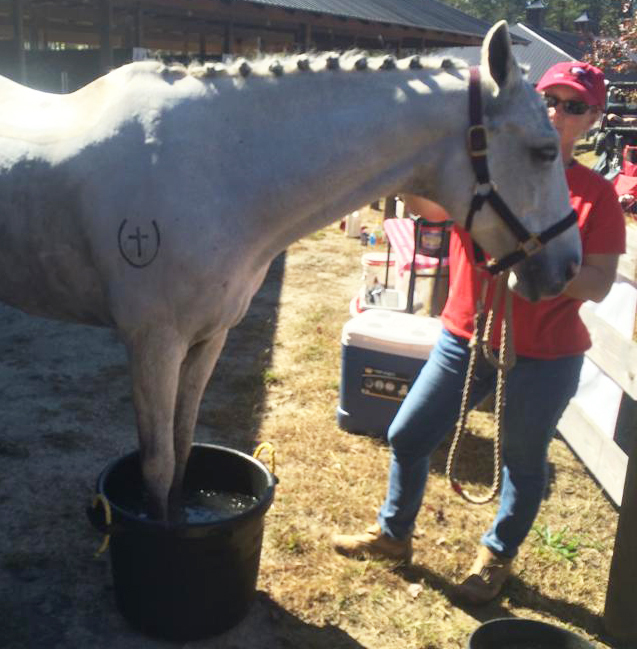Tips and Tricks of the Trade: Post Cross-Country Leg Care

Tips and Tricks of the Trade is a new article series being provided through a partnership between Athletux and the USEA. This month's article comes from one of Allison Springer's working students, Jill Thomas, who has had extensive experience caring for some of the top horses in Springer's program.
As our competition season is in full swing, our horses are in the prime of their fitness work. As we all know, care of our event horses legs is very important, especially following gallops or cross-country.
The upper level horses at Allison Springer Eventing (ASE) typically will do gallop sets once a week leading up to competition, while horses going training and below will do a slow canter once weekly. After care of the horse’s legs on these days is very important to prevent any injury and ensure that these horses stay in the best condition possible.
Upper level horses will be iced following gallops and cross-country. Ice therapy is a great way to cool your horse’s legs after a hard exercise to help prevent soft tissue and joint damage. I love to be able to use either five-gallon pails or a large muck tub (pictured below) for icing the front legs, so that everything from the hooves to above the knee can receive the benefits of icing. If your horse won’t stand in buckets, Jack’s Ice Boots with foot pans work great as well. Just be sure to make the boots wet to achieve the best result. Horses should be iced for twenty minutes at a time, after that time, there is no greater benefit. After a big cross-country course, horses may be iced multiple times in twenty minute increments. They would stand in ice for twenty minutes, stand out of ice for twenty minutes, and so on.

Some horses stand well enough to be iced in a muck tub.
After icing, I will towel dry the legs before rubbing the legs down with a liniment. I really like to use Equine Advantage LLC’s “Sooth’n Cool Gel”. Standing wraps should be applied to achieve best results.
Don’t forget about the feet! For horses who don’t have pads in their front hooves, packing their feet is essential especially in the summer months when the dry ground can cause a lot of concussion. There are many pre-mixed hoof packing products, but a mix of Epsom salts and liniment in the hoof can do the trick just as well. Packing the feet can help remove heat and reduce the impact of heavy concussion from a gallop or cross-country.
The day after the horses have galloped or competed, they are all jogged up to check their soundness. It’s also really important to check their legs – everyday, not just after cross-country - for any heat, swelling, or new bumps. If you can notice any change in your horse’s leg when it first appears, you can often prevent a potentially more serious injury down the road.
Learn more about Allison Springer Eventing by visitng their website.














